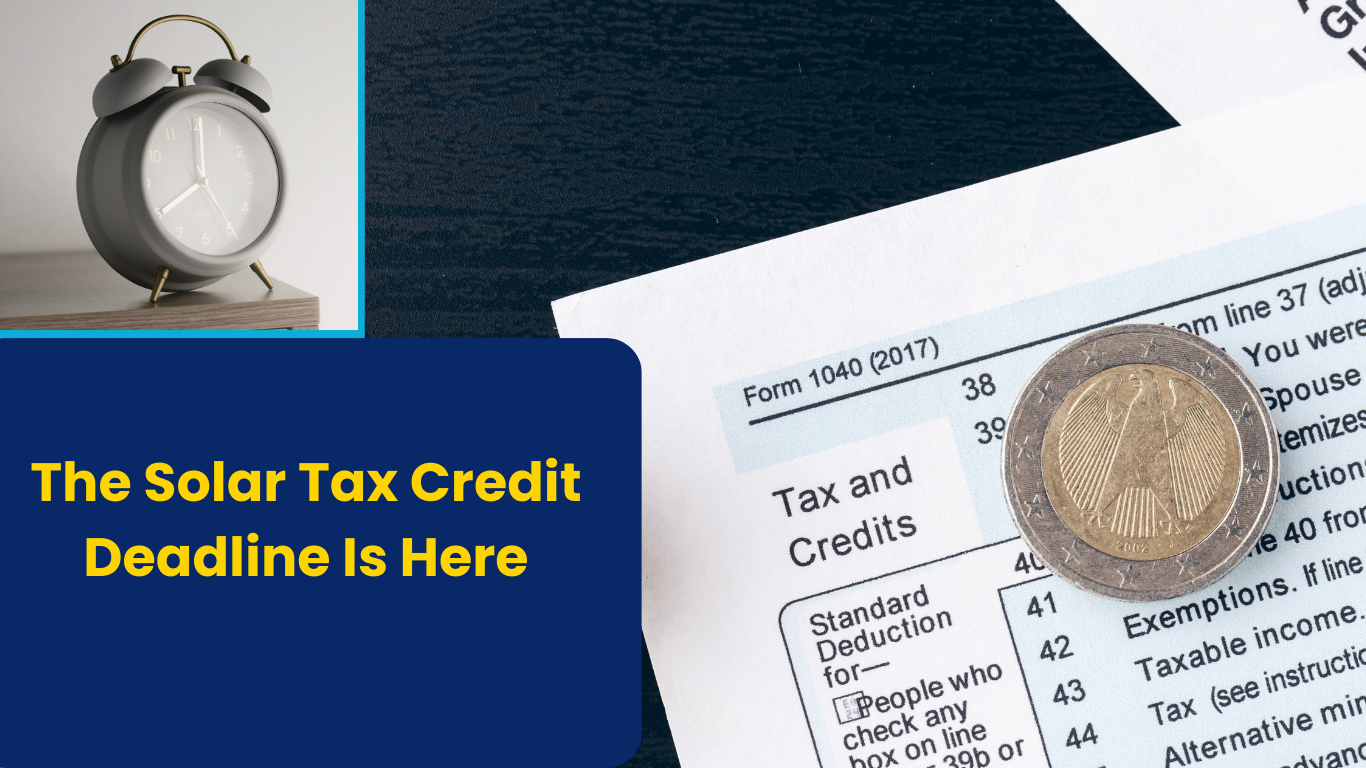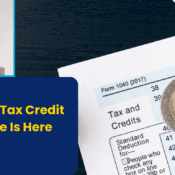
What Homeowners Should Know About The Solar Tax Credit Deadline
Did you know you can now save the most by going solar before the solar tax deadline? The 30% federal solar tax credit faces its final deadline on December 31, 2025, leaving homeowners with less than five months to secure this substantial financial benefit. The federal government has set this firm cutoff date for residential solar installations, marking the end of a significant clean energy incentive – since its creation in 2005.
This federal solar tax credit, officially known as the 25D tax credit, has opened clean, solar energy access to middle-income families nationwide. With increasing rates from utility companies every year, the timing of this matters more than ever. Utility companies are building infrastructure, capacity, and expansion which means the average household faces roughly 8% increases in yearly electricity costs.
Homeowners evaluating solar installations need clarity on this approaching deadline. Residential solar taxes by 25D tax credit ends December 31, 2025. This means the solar system must be fully installed by the deadline, otherwise the solar tax credit will not apply. Tax credit eligibility is another factor to consider since it will rely heavily on individual tax scenarios of the homeowners.
What's Happening To The Solar Tax Credits?
The passing of the ‘Big Beautiful Bill’ has drastically shortened the federal residential solar tax credit timeline, impacting millions of homeowners exploring clean energy options for their homes. Recent legislation known as the “Big Beautiful Bill” changed everything by ending the credit completely after December 31, 2025. No gradual phase-out exists as previously planned, forcing homeowners who are considering solar to act quickly.
What is the 25D solar tax credit and when is the deadline?
The 25D solar tax credit, officially called the Residential Clean Energy Credit, lets homeowners deduct 30% of their solar installation costs from federal taxes. This credit covers multiple clean energy technologies: solar panels, solar water heaters, and battery storage systems. Your system must be fully installed by December 31, 2025 to qualify.
How the New Law Changes The Solar Industry
Different rules apply to different project types under the new legislation. Residential systems face the 2025 deadline, while commercial solar projects under Section 48E continue until December 31, 2027. Foreign Entities of Concern (FEOC) requirements become stricter starting in 2026, requiring at least 40% of manufactured products to come from non-prohibited countries. Third-party ownership arrangements like leases and power purchase agreements (PPAs) may gain popularity once the residential credit disappears.

Homeowners Can Save More By Going Solar Before The Deadline
It makes more sense now for homeowners to consider solar investments before the December 31, 2025 cutoff date. Understanding the financial impact of this expiring credit helps families take advantage of alternative energy opportunities and save on costs over a lifetime.
How rising electricity rates make solar more valuable
Electricity costs outpace general inflation and will keep climbing through the next 5 years and beyond. Solar installations lock in predictable energy costs for 25+ years, providing protection against these escalating utility bills.
Learn more about how solar helps reduce the bills
One of the biggest reasons homeowners make the switch to solar is simple: it saves money long-term. When you install solar panels and batteries on your home, you’re generating your own electricity and storing it for later. This method allows you to use energy when the times of use (TOU) energy rates are high. Over time, those savings really add up allowing you to be in net profit after your break-even period.
Solar Installers Brace for Rush and Delays
Solar installation companies nationwide face increasing demand as homeowners scramble to secure the tax credit before it expires. This deadline-driven demand creates substantial challenges across the industry’s supply chain and installation timelines.
Why installation timelines are tightening
Solar installation timelines, has already shown demand under tariff laws, now face unprecedented times. The complete process typically requires two to four months from initial contract to install completion. Several critical steps determine this timeline for the average homeowner:
- Research and obtaining quotes: 1-2 months
- Contract to installation: 2-3 months
- Utility interconnection: 2-4 weeks (often longer)
These timelines are expanding as demand surges. Industry experts predict a significant installation rush throughout the second half of 2025, creating longer wait times and scheduling bottlenecks.
How to avoid missing Residential Solar Incentives
Your solar system must be operational by December 31, 2025, to qualify for the tax credit. Contract signatures or permit applications alone won’t secure eligibility. Quick and professional installation becomes essential.
Starting immediately offers the best protection against missing this deadline.
Third-Party Solar and Commercial Projects Still Qualify
Residential solar tax credits may be ending, but commercial installations follow entirely different rules that extend well beyond 2025 – to December 31, 2027. These distinctions open alternative financing paths for homeowners who might otherwise miss the residential deadline.
How Section 48E differs from 25D for solar panel tax credit
Commercial solar installations operate under Section 48E rather than the residential Section 25D credit. The timeline difference is substantial—commercial projects can claim the full 30% tax credit until December 31, 2027. This extended timeframe affects third-party owned systems, where companies install panels on your property while retaining ownership. These arrangements can still qualify for credits after residential deadlines pass.
Section 48E maintains the complete 30% credit rate as a “bonus rate” for qualifying projects. Commercial entities also enjoy transferability options—they can sell tax credits to unrelated parties for cash payments. Individual homeowners cannot access this flexibility under residential programs.
Why leases and PPAs may become more popular
Third-party ownership models could see increased adoption as direct ownership benefits disappear. Power Purchase Agreements (PPAs) and solar leases eliminate upfront costs—homeowners pay only for electricity use or system access. Find out whether leasing or a PPA is the better option for you. Companies retain equipment ownership while residents purchase the power generated. Third-party financing already ranks among the most popular solar financing methods nationwide. These arrangements may offer viable alternatives for families who miss the residential credit deadline.
Conclusion
The clock continues ticking toward December 31, 2025, when residential solar tax credits disappear permanently. Homeowners face a pivotal choice that could affect their household energy costs for decades. This deadline determines whether families can secure thousands in federal tax benefits while protecting themselves against rising utility rates.
Starting the solar evaluation process now becomes critical for success. Most homeowners underestimate how long installations actually take—from research through final grid connection.
Homeowners who understand the stakes can make educated decisions about their energy future. Quick action leads to substantial savings opportunities. Delay risks missing this significant financial incentive completely.
Disclaimer: The information provided regarding the federal solar tax credit is for general informational purposes only and should not be construed as legal, financial, or tax advice. Eligibility for the solar tax credit may vary based on individual circumstances, including income level, tax liability, property ownership, and system installation details. Tax laws and incentives are subject to change and may differ by jurisdiction.
We strongly encourage all homeowners to consult with a qualified tax professional or financial advisor to determine how the solar tax credit may apply to their specific situation. Only a licensed expert can provide guidance tailored to your unique financial profile and ensure compliance with current IRS regulations.
Recent Posts
Reduce your reliance on the energy grid.
Get Solar In
Your Inbox

Refer friends and get paid in-app
The more referrals you bring in, the higher your earnings.
Earn $1,000 for each referral, and bonuses of up to $1,500 once you hit your 10th referral.



